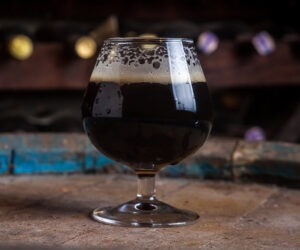Infusion Mashing: Tips from the Pros
Brewer: Richard Young
Brewery: Castle Springs Brewing Co. Moultonborough, N.H.
Years of experience: Nine
Education: BA in criminal justice from Stonehill College, Easton, Mass.
House Beers: American Wheat Beer, Munich-Style Lager, India Pale Ale, Porter, Autumnfest, Winter Festival Ale
We have a two-vessel brewhouse, a mash/lauter tun with a brew kettle. So we are limited to single-step infusion mashing, which means using highly modified malts such as Canadian two-row is compatible for our purposes.
Single-step infusion involves mashing at one temperature. But we mash with different temperatures for different beers. In general, with the exception of our wheat beer, we create malty, full-bodied beers.
For example take our India pale ale. Many English brewers, and even some American brewers, use mash temperatures that are very low, 148° to 152° F. I use a lot of caramel malt. With a higher mash temperature, 155° to 156° F, I get more from the caramel malt, including more malty sweetness. This sweetness provides a nice balance for the large quantity of hops (at 65 IBUs) we use for the IPA.
We brew our porter in a similar fashion. We aim for very rich, malty flavor with a touch of sweetness. This brew has a starting gravity of 16° Plato or 1.064. Because higher mash temperatures tend to produce more dextrinous worts, we mash at 156° F to ensure that we will get enough unfermentables left over. Our FG is 5° Plato or 1.020; plenty of body and maltiness.
One of the most basic aspects of single-step mashing that homebrewers should focus on is consistency. Pay attention to the ambient temperature of your mash tun, your room, and the malt. If you store grain at 50° F and you bring it into an environment that is 70° F, you might get differences in your mash temperature. Also, try to keep your mash tun insulated.
When I was homebrewing I tried to shoot for a mash temperature that was a little higher than required. It seemed easier to cool down a mash than to heat it up. If you are using a picnic cooler and you shoot for 155° F but accidentally get 148° F, the only way you can raise the temperature is by adding boiling water. But then you are changing the consistency of the mash. If you shoot for 155° F and instead reach 159° F, you can cool the temperature by using a little less cold water than you would hot water to heat a mash that is too cool. You accomplish this by stirring. When you stir you want to fold — not splash — the wort like you’re folding whipped cream or egg whites. This method only makes a small temperature difference, though.
You could also change the temperature by adding grain, but you would probably change your beer more that way than you would if you added water. When you add grain you are actually changing the balance of the beer, the grain bill. The total amount of sugars dissolved in the mash depends on the actual malt itself. So when you add a little cold water you’re not changing the amount of sugars.
Now, there are limits to how much you can alter temperature without negatively affecting your finished product. I used to use a picnic cooler. If I was a degree or two off, I would stir gently until the temperature came down. If you’re off by five degrees, that’s a different story.
Say I want the mash temperature for my IPA to be 156° F. Would our beer at a 152° F mash taste completely different? Probably not. But the idea is consistency. At 152° F you still get plenty of fermentables and might even still hit the same target for your original gravity, but the blend between the fermentables and non-fermentables may be different. So, for example, say I were to mash our IPA at 152° F and it ferments down to 3.5° Plato, or 1.014 for the final gravity. Take that same brew and instead mash at 156° F; it may not reach an FG until around 4° Plato, or 1.016 FG. There’s your difference. It may not be completely perceptible in hop and malt balance, but it might in other ways. The one at 152° F may have a drier flavor than the second. And that’s directly related to the fact that fewer fermentables were left over after mashing at a lower temperature.
But most modified malts are flexible enough so that enzymes will be active at mashes as low as 146° F up to 158° F. It is not easy to deactivate enzymes with today’s modified malts. Just be aware of the sublte differences caused by temperature variations.



